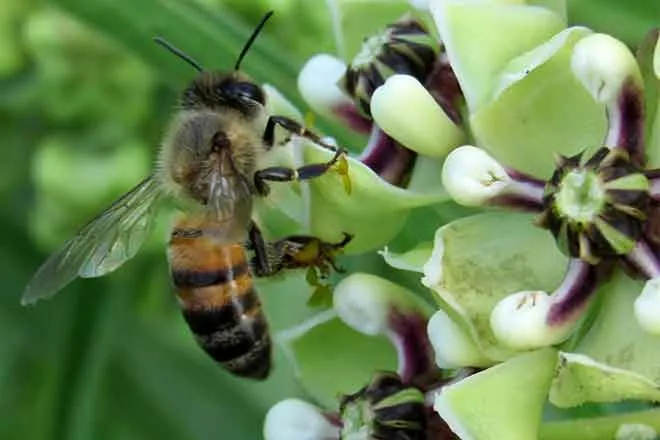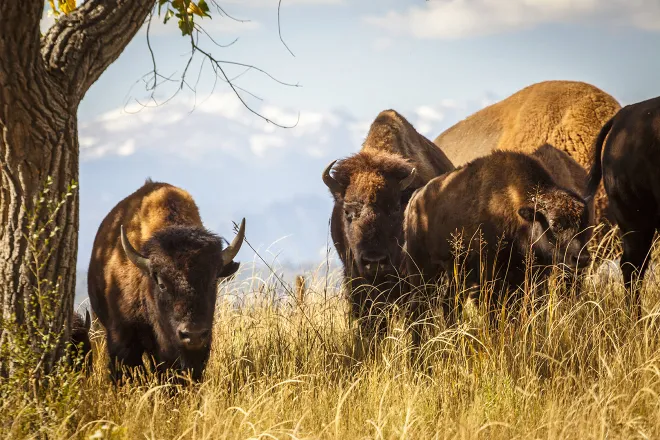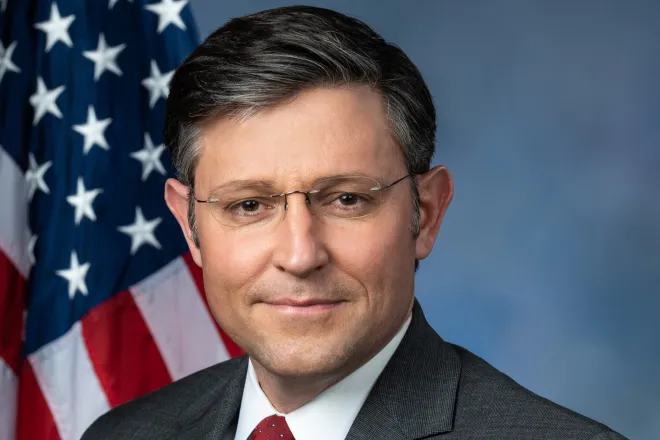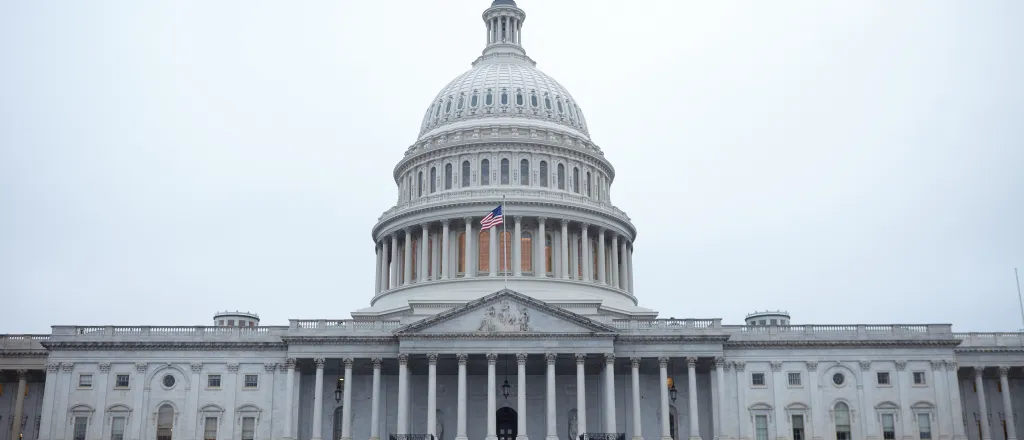
‘Frustrating’ partisan stalemate: the new normal for farm bills?
(Colorado Newsline) The stalemate over the current farm bill may be solidifying a new era in farm politics as it joins the last three farm bills in a trend of delays and partisan division — a contrast from the legislation’s history of bipartisanship.
Every five years, Congress is tasked with drafting a new federal farm bill. The omnibus law that began 90 years ago as various kinds of payments to support farmers now has an impact far beyond the farm, with programs to create wildlife habitat, address climate change and provide the nation’s largest federal nutrition program.
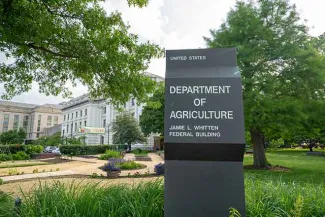
© iStock - Melissa Kopka
The current farm bill process, already nearly a year behind schedule, is at an impasse as Democrats and Republicans clash over how to pay for the bill and whether to place limits on nutrition and climate programs. The previous farm bill expired in September 2023 and has been extended through the end of this September.
Historically, farm bills were completed within a few months of their expiration date. Ten of the 13 farm bills since 1965 were enacted by December 31 in the year of their expirations. But three of the four farm bills since 2008 went beyond that date.
The last three bills – including the 2018 bill, which is the one recent version that passed on time – each had partisan disagreements about spending.
The trend represents a change in how the once-bipartisan legislation is viewed.
“The last two farm bills were the anomaly,” said Jonathan Coppess, a professor of Agricultural Law and Policy at the University of Illinois who has written a history of the farm bill. “Now that it has been three in a row, I’m not sure that holds.”
A recent report from the nonpartisan Congressional Research Service notes that starting in 2008, farm bills have been subject to delays, vetoes and insufficient votes to pass on the floor.
The report concluded: “Over time, farm bills have tended to become more complicated and politically sensitive. As a result, the timeline for reauthorization has become less certain.”
Spending debate
That uncertainty is true of the current farm bill, as Republicans in the House and Senate push for spending limits that Democrats say are non-starters.

“I don’t think we’re close to getting a farm bill done until the folks who are negotiating the farm bill are realistic about what’s doable within a constrained resource environment,” Agriculture Secretary Tom Vilsack said in an interview on the radio program AgriTalk June 21.
The Republican-led House Agriculture Committee approved its farm bill proposal largely on party lines at the end of May, after hours of debate and complaints from Democrats that the process had not been as bipartisan as in years past.
Four Democrats voted for the bill in committee, but they joined 20 other Democrats on the committee in a “dissenting views” letter expressing “genuine concern over the trajectory of the Majority’s partisan farm bill” – which they predicted would be stuck in delay and dysfunction without significant changes.
The Senate Agriculture Committee has yet to vote. The Republican and Democratic leaders of the committee have each put forward contrasting bills and expressed their frustration.
‘The most frustrating time’
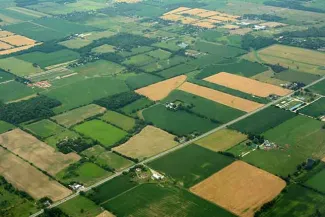
© iStock - IMNATURE
Senate Agriculture Committee Chairwoman Debbie Stabenow, a Michigan Democrat who is retiring after this term, has called the process the “most frustrating” of her career and said she would not let the Republican approach for the farm bill be her legacy.
“I’ve actually been involved in six farm bills and led on three of them, and this has been the most frustrating time,” said Stabenow in an interview with Michigan Advance at the end of June. “Because it’s so much more partisan than usual and particularly around food assistance.”
Partisan division is not uncommon in today’s Congress but is notable on the farm bill, which had historically brought together lawmakers from both sides of the aisle. Bipartisan support can be necessary for final passage because the size of the $1.5 trillion farm bill means it inevitably loses some votes from fiscal conservatives and others.
“If you don’t have a bipartisan bill, this is not going to happen, and that is no matter who’s in charge. The margins are too close to be able to get this done without bipartisan support,” said Collin Peterson, a former Democratic House member from Minnesota and Agriculture Committee Chairman.
I don’t think we’re close to getting a farm bill done until the folks who are negotiating the farm bill are realistic about what’s doable within a constrained resource environment.
– Agriculture Secretary Tom Vilsack
The key dispute for Democrats this year is a funding calculation that would place limits on the “Thrifty Food Plan” formula that calculates benefits for the Supplemental Nutrition Assistance Program, SNAP.
Republicans are using the limits to offset other spending in the bill on crop subsidies. The top Republican on the Senate Agriculture Committee, Arkansas Senator John Boozman, said he wants to put “more farm in the farm bill.”
Peterson, who is now the head of an eponymous consulting firm, said in an interview with States Newsroom that Republicans would likely have to make changes to the nutrition title to get a bill to final passage.
“It is unrealistic to think they are going to get this done without significant changes in that part of the bill,” he said.
‘An uneasy alliance’ from the start
The nutrition program that is at the center of the impasse was added to the legislation 50 years ago to help build a coalition of wide-ranging bipartisan support.
Lawmakers added the nutrition title to the farm bill in 1973, a move that widened the vested interest in the bill in the House. Lawmakers who wanted to increase payments for cotton and wheat farmers in their districts were able to bring in support from representatives from districts whose citizens could benefit from food aid.
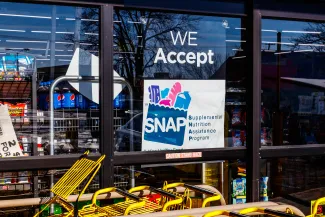
“That was the first coalition building between the two interests,” Coppess said. “But it was pretty intense. And it was an uneasy alliance from the start.”
Since then, the farm bill in many ways has become a food bill. Three-quarters of the mandatory spending in the bill falls under the nutrition title, which includes SNAP, the largest U.S. program that addresses hunger.
The program, formerly called food stamps, supplements food budgets for low-income households. Anti-hunger groups have joined the outside interests pushing for the bill every five years.
But with such a large funding line, the nutrition program has become a target for Republicans who want to cut it to offset other spending in the bill.
“The dispute is all the pay-fors,” Peterson said. “And that has been the issue for the last three farm bills and issue on this one as well.”
Peterson, who was chairman of the House Agriculture Committee for the 2008 farm bill and was the top Democrat on the committee for the 2013 and 2018 bills, said partisan division on the committee is not unfamiliar at this phase of the process.
The farm bills he worked on also had partisan votes in the House but eventually found support from both sides after conferencing with the Senate.
“At the end of the day, every one of those bills was partisan, until we got through the conference committee, and then at that point it was bipartisan, because the Senate brought some of that to the table,” Peterson said. “So, kind of, what’s going on here went on the last three farm bills.”
The most recent farm bill in 2018 was marked by contentious partisan debate centered on SNAP’s work requirements and other eligibility rules.
The House Agriculture Committee’s bill that year initially failed on the House floor and later squeaked through on a 213-211 vote. Twenty Republicans joined all House Democrats in voting against that bill.
After reconciling with the Senate bill and the removal of some of the contentious changes to SNAP, most Democrats flipped their votes in support and the House agreed to the final conference report in a bipartisan vote of 369-47. The dissenting votes included 44 Republicans and three Democrats.
A trend toward fracture
The partisan division over the nutrition title creates new fault lines for the farm bill.
Historically, farm bill alliances were more regional than partisan. They were built on a common ground of support for shared crops or producers: cotton in the South, corn in the Midwest and wheat in the Western Plains.
“What was our biggest issue back in the four farm bills that I wrote was not Republican versus Democrat. It was usually Midwest against the Southeast or the Northeast or the Southwest from a crop standpoint,” former Senator Saxby Chambliss said in an interview.
Chambliss, a Republican from Georgia, was on the House Agriculture Committee from 1995 to 2002 and the Senate Agriculture Committee 2005 to 2011, which included a stint as chairman and ranking member.
“There’s a different political dynamic that exists in the Senate today that did not exist when I was there,” Chambliss said. “How much of that bleeds into the farm bill? I don’t know the answer to that, but obviously it’s a little more acrimonious than what I ever experienced.”
As partisan politics have become more entrenched in regions of the country, with the South becoming more closely aligned with the Republican Party, it has played out in farm-bill politics.
“You see a staunch realignment around where the regional and the partisan are now very similar,” said Coppess.
Colorado Newsline is part of States Newsroom, a nonprofit news network supported by grants and a coalition of donors as a 501c(3) public charity. Colorado Newsline maintains editorial independence. Contact Editor Quentin Young for questions: info@coloradonewsline.com. Follow Colorado Newsline on Facebook and X.


